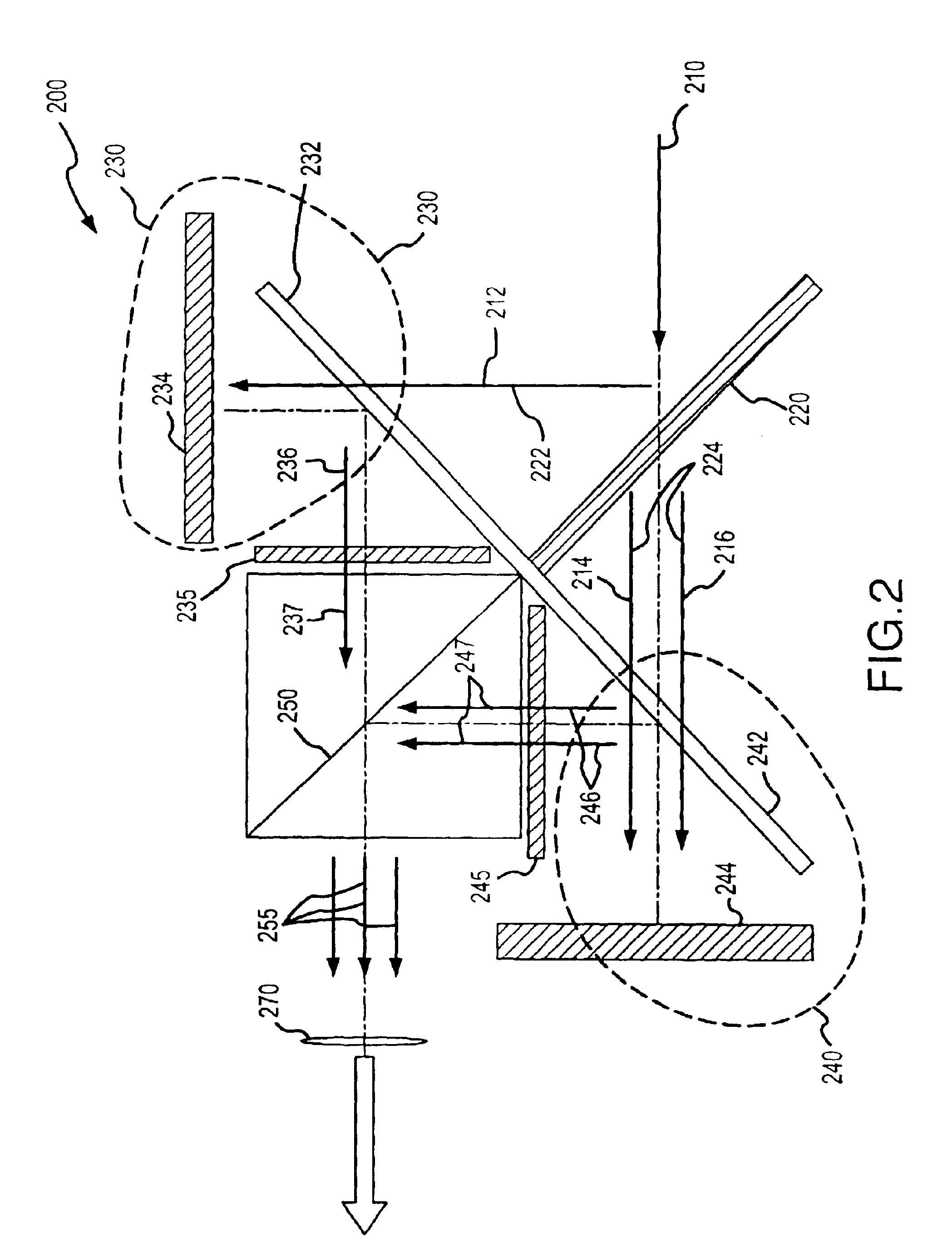Color management system
- Summary
- Abstract
- Description
- Claims
- Application Information
AI Technical Summary
Benefits of technology
Problems solved by technology
Method used
Image
Examples
Embodiment Construction
The present invention may be described herein in terms of various functional elements and / or various processing steps. It should be appreciated that such functional elements may be realized by any number of software, hardware, electrical, optical and / or structural elements configured to perform the specified functions. For example, the present invention may employ various optical and / or digital electrical elements, whose values may be suitably configured for various intended purposes. In addition, the present invention may be practiced in any optical application. However, for purposes of illustration only, exemplary embodiments of the present invention will be described herein in connection with projection displays. Further, it should be noted that while various elements may be suitably coupled or connected to other elements within exemplary optical systems, such connections and couplings can be realized by direct connection between elements, or by connection through other elements ...
PUM
 Login to View More
Login to View More Abstract
Description
Claims
Application Information
 Login to View More
Login to View More - R&D
- Intellectual Property
- Life Sciences
- Materials
- Tech Scout
- Unparalleled Data Quality
- Higher Quality Content
- 60% Fewer Hallucinations
Browse by: Latest US Patents, China's latest patents, Technical Efficacy Thesaurus, Application Domain, Technology Topic, Popular Technical Reports.
© 2025 PatSnap. All rights reserved.Legal|Privacy policy|Modern Slavery Act Transparency Statement|Sitemap|About US| Contact US: help@patsnap.com



